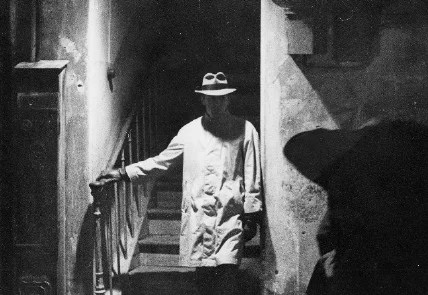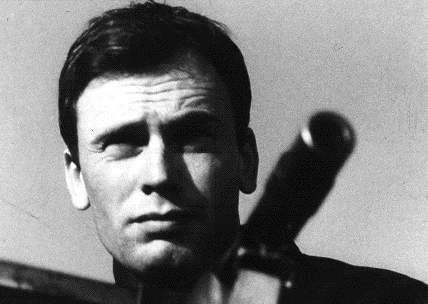Le Combat Dans L'île
Alain Cavalier
A Film by Alain Cavalier
Starring Jean-Louis Trintignant,
Romy Schneider and Henri Serre
With Maurice Garrel
Photographed by Pierre Lhomme
Alain Cavalier's debut film available for the first time in the US
Alain Cavalier’s Le Combat Dans L’île (1962), a rediscovered masterwork of the French New Wave, starring three icons of the era — Romy Schneider, Henri Serre, and Jean-Louis Trintignant — will have its New York premiere at Film Forum.
Romy Schneider’s marriage to rich factory owner’s son Jean-Louis Trintignant has its rough side: his frequent absences for unexplained reasons, frightening outbursts of insane jealousy, and — her latest shocking discovery — a carefully wrapped anti-tank bazooka in the hall closet. However, there’s his friend to confide in, that warm and friendly pacifist, artisanal printer Henri Serre (Jim of Jules and Jim). All too little known today, Le Combat Dans L’île subtly evokes a divided marriage — not unusual in French films — and a divided nation — but not estranged as seen in the then-dominant Nouvelle Vague. Addressing political assassinations (at the time, the attempts on Charles de Gaulle reached double figures), underground extreme right-wing groups, even international, right-wing fugitives — producer Louis Malle was clearly making a political statement distinct from that of his New Wave confrères.
Cavalier’s first major film (he’d previously been a Malle assistant) exhibits an assurance of tone and pacing that make this a uniquely gripping, intricate triangle-drama/thriller, as the camera of Pierre Lhomme (DP of Melville’s Army of Shadows — he also personally supervised this new 35mm print) illuminates striking locations from industrial parks to road diners to Serre’s rural island refuge (you can almost smell the crisp winter air), while providing a surprisingly fresh look at that most-filmed of subjects — particularly during this period — Paris itself, both inside and out.
Le Combat Dans L’île also spotlights Romy Schneider’s (“the best actress of her generation” – Visconti) first starring part in French, the language and cinema she would make her own: her breakthrough performance would be a major leap from the saccharine biopics of her Austrian youth. Trintignant, already a mid-range star at home, would break out internationally later the same year in Dino Risi’s Il Sorpasso, and become world-famous a few years later with A Man and a Woman and Costa-Gavras’ Z.
(Text courtesy of Film Forum)
“Not to be missed. Cavalier’s subtly committed and beautifully crafted thriller investigates the political dilemmas of early 1960s France under the guise of a love triangle. It stars three of the most accomplished actors of European cinema of the period—Romy Schneider, Jean-Louis Trintignant and Henri Serre (Jim of Jules and Jim)—at their absolute peak here. It captures the fractured nature of France, fresh from the Algerian war, in a striking manner.”
“Cavalier captures the ambiguous, fractured nature of France in the early 1960s in the most strikingly intimate manner... The seemingly ubiquitous French narrative device of the love triangle takes on a more political significance with Trintingnant’s cold fish rightwing dupe battling for the affections of his wife with the sympathetic and liberal Serre... With Noirish twinges, great interior lighting and framing devices and some wonderful location shooting, the film resonates on an aesthetic as well as an ideological level. An underrated and unusual thriller.”
“Romy Schneider (1938-1982) was underrated as an actress for a long time by the fashionable tastemakers because of her enormous popularity in the “Sissi” series of royal romances set in the dear, dead days of the Austro-Hungarian Empire. She was still in her teens when these movies came out to great popular acclaim in the German-speaking world, but they became an albatross around her neck comparable to The Sound of Music for Julie Andrews. She consciously changed her image in Visconti’s “The Job” episode in the three-part Boccaccio 70, and in Orson Welles’ The Trial, and she subsequently gave remarkably complex and multifaceted performances in The Cardinal, What’s New, Pussycat?, The Things of Life, Cesar et Rosalie, The Assassination of Trotsky, Ludwig, Le Trio Infernal, Dirty Hands, Mado, and Clair de Femme. Tragically, her career and talents were clearly on the rise as she got older. The question is why her remarkable achievements were taken so much for granted until it was too late. I am still haunted by her wan, sad smile, as I was by that of her mother, Magda Schneider, in Max Ophul’s Liebelei.”
“One of the hidden gems of the Nouvelle Vague!”








